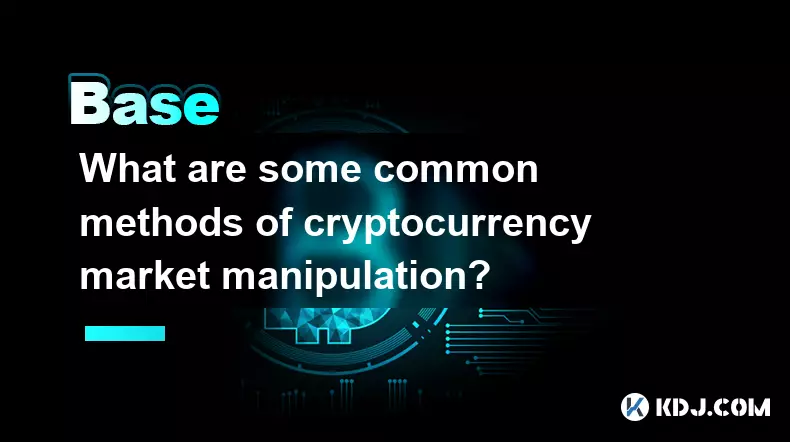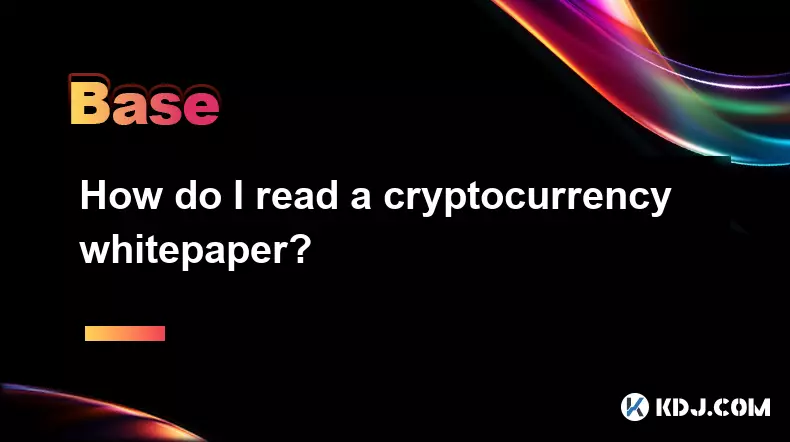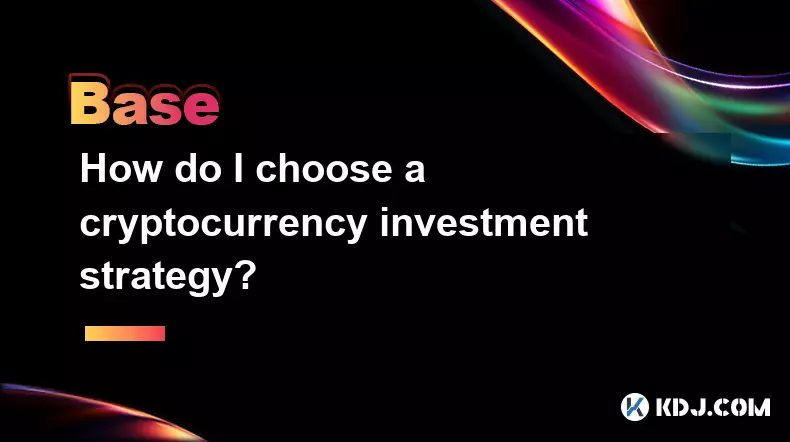-
 bitcoin
bitcoin $122659.385674 USD
0.52% -
 ethereum
ethereum $4484.113342 USD
-0.09% -
 bnb
bnb $1304.229256 USD
-0.85% -
 tether
tether $1.000204 USD
-0.03% -
 xrp
xrp $2.860636 USD
-0.51% -
 solana
solana $227.288799 USD
2.36% -
 usd-coin
usd-coin $0.999805 USD
0.01% -
 dogecoin
dogecoin $0.252837 USD
1.18% -
 tron
tron $0.341149 USD
1.12% -
 cardano
cardano $0.830507 USD
0.33% -
 hyperliquid
hyperliquid $45.792319 USD
0.04% -
 chainlink
chainlink $22.422164 USD
1.55% -
 ethena-usde
ethena-usde $1.000283 USD
0.01% -
 sui
sui $3.511389 USD
0.83% -
 stellar
stellar $0.385276 USD
-0.44%
What is fully diluted valuation?
Fully Diluted Valuation (FDV) estimates a crypto project's total value if all tokens were in circulation, offering insight into future supply impact and potential price pressure.
Aug 12, 2025 at 10:16 pm

Understanding Fully Diluted Valuation in Cryptocurrency
Fully diluted valuation (FDV) is a metric used in the cryptocurrency space to estimate the total market value of a digital asset if all possible tokens were in circulation. This includes not only the currently circulating supply but also tokens that are locked, reserved for future distribution, or held by team members, investors, or ecosystem funds. Unlike market capitalization, which only considers the circulating supply, FDV provides a broader perspective on a project’s potential valuation at full token release.
For example, if a cryptocurrency has a current price of $2 and a maximum supply of 1 billion tokens, its FDV would be $2 billion, even if only 200 million tokens are currently in circulation. This distinction is critical because many early-stage crypto projects have a small circulating supply, making their market cap appear low while their FDV may reveal a much larger potential market impact.
How to Calculate Fully Diluted Valuation
Calculating FDV is straightforward and requires two key pieces of information: the current price of the token and the maximum supply or total supply of the token as defined by the project’s protocol.
- Obtain the current market price of the cryptocurrency from a reliable exchange or data aggregator.
- Identify the maximum supply of the token. This information is typically found in the project’s whitepaper, official website, or blockchain explorers.
- Multiply the current price by the maximum supply.
For instance, if Token X is trading at $0.50 and has a maximum supply of 500 million, the FDV is calculated as:
$0.50 × 500,000,000 = $250 millionThis result represents the theoretical valuation if all tokens were released and traded at the current price. It's important to note that some tokens are uncapped, meaning they have no maximum supply. In such cases, FDV cannot be accurately calculated and may not be a meaningful metric.
Differences Between FDV, Market Cap, and Circulating Supply
While market capitalization reflects the value of only the tokens currently available for trading, FDV accounts for all tokens that will eventually enter circulation. This makes FDV a more conservative and comprehensive measure, especially for projects with long-term token release schedules.
- Market Cap = Current Price × Circulating Supply
- FDV = Current Price × Maximum Supply
Projects with a large portion of tokens locked or vested over several years can show a low market cap while having a significantly higher FDV. Investors analyzing such projects should consider both metrics. A low market cap with a high FDV may indicate downward price pressure in the future when new tokens are released.
For example, a project with a market cap of $100 million but an FDV of $1 billion suggests that 90% of tokens are not yet circulating. When those tokens are unlocked, the increased supply could affect the price unless demand rises proportionally.
Why Fully Diluted Valuation Matters to Investors
FDV is a crucial tool for assessing the long-term investment potential and risk profile of a cryptocurrency. It helps investors anticipate the impact of future token emissions on price stability. A high FDV relative to market cap may signal that the project is overvalued in the short term if future supply is not matched by demand.
Investors should also examine tokenomics, including vesting schedules, inflation rates, and utility of the token. For instance, if a large portion of tokens is allocated to staking rewards or ecosystem development, the gradual release may be justified. However, if tokens are concentrated among early investors with imminent unlock dates, the FDV can highlight potential sell pressure.
Moreover, comparing FDVs across projects in the same sector allows for more accurate benchmarking. A decentralized exchange with an FDV of $2 billion may appear expensive compared to peers with similar functionality but lower FDVs, even if its current market cap seems modest.
Limitations and Misinterpretations of FDV
While FDV is informative, it has limitations. It assumes that all tokens will eventually be sold at the current market price, which may not reflect reality. Some tokens may be held long-term, burned, or used for governance rather than traded. Additionally, FDV does not account for token utility or demand drivers, such as staking, fees, or network usage.
Another common misinterpretation is treating FDV as a guaranteed future market cap. In reality, price is influenced by supply and demand. If new tokens enter circulation without corresponding demand growth, the price may drop, meaning the FDV at that future point could be much lower.
Furthermore, for inflationary tokens with no maximum supply, FDV is either infinite or undefined, rendering it an impractical metric. In such cases, investors must rely on alternative valuation models, such as realized cap or network value to transactions (NVT) ratio.
Using FDV in Practical Analysis: A Step-by-Step Guide
To effectively use FDV in cryptocurrency analysis, follow these steps:
- Identify the token’s maximum supply through official sources like the project’s whitepaper or blockchain explorer.
- Check the circulating supply on platforms like CoinGecko or CoinMarketCap.
- Calculate both market cap and FDV using current price data.
- Compare the ratio of FDV to market cap—a ratio significantly greater than 1 indicates a large portion of tokens are not yet circulating.
- Review the token release schedule, including vesting periods for team and investors, to anticipate future supply changes.
- Assess demand-side factors, such as user growth, transaction volume, and staking adoption, to determine if future supply can be absorbed.
This structured approach helps avoid overestimating a project’s value based solely on current price and circulating supply.
Frequently Asked Questions
What happens to FDV when a token has no maximum supply?When a cryptocurrency has no maximum supply—such as Ethereum or some algorithmic stablecoins—FDV cannot be calculated in the traditional sense. In these cases, the concept of FDV is not applicable, and analysts often use other metrics like inflation rate or issuance schedule to evaluate supply-side dynamics.
Can FDV be lower than market cap?No, FDV cannot be lower than market cap because it is based on the maximum possible supply. Since circulating supply is always less than or equal to maximum supply, FDV is always equal to or greater than market cap. If a token’s circulating supply equals its maximum supply, then FDV and market cap will be identical.
How do token burns affect FDV?When a project burns tokens, it permanently removes them from circulation, effectively reducing the maximum supply. This lowers the FDV because the new FDV is calculated using the updated, lower maximum supply. For example, if a project burns 10% of its max supply, the FDV decreases proportionally, assuming the price remains constant.
Is FDV used in traditional finance?While the concept of fully diluted valuation exists in traditional finance—often applied to companies with outstanding stock options or convertible securities—the application in crypto is more direct due to transparent, algorithmic token issuance. In equities, fully diluted shares include potential future shares from options, whereas in crypto, the entire supply schedule is typically predefined and on-chain.
Disclaimer:info@kdj.com
The information provided is not trading advice. kdj.com does not assume any responsibility for any investments made based on the information provided in this article. Cryptocurrencies are highly volatile and it is highly recommended that you invest with caution after thorough research!
If you believe that the content used on this website infringes your copyright, please contact us immediately (info@kdj.com) and we will delete it promptly.
- Fan Tokens, Serie A, and Collapses: A New Era or a False Start?
- 2025-10-09 22:25:15
- MoonBull Presale Heats Up Amid ASTER & WLFI Market Moves: The 100x Crypto Opportunity?
- 2025-10-09 22:45:16
- Unlocking the Secrets: Royal Mint Coins and the Stories They Tell
- 2025-10-09 22:45:16
- Pepe, Cryptocurrency, and Mining: Riding the Meme Wave to Passive Income
- 2025-10-09 23:05:15
- Strategy, Fixed Income, Changes: Navigating the Evolving Digital Asset Landscape
- 2025-10-09 22:50:12
- LEGO Batman 2026: A Legendary Batmobile Collection is Coming!
- 2025-10-09 22:25:15
Related knowledge

How does cryptocurrency achieve decentralization?
Sep 30,2025 at 04:37am
Understanding the Foundation of Decentralization in Cryptocurrency1. Cryptocurrency achieves decentralization primarily through the use of blockchain ...

What are some common methods of cryptocurrency market manipulation?
Sep 27,2025 at 02:55am
Wash Trading and Its Impact on Market Perception1. Wash trading involves an individual or entity simultaneously buying and selling the same cryptocurr...

How do I read a cryptocurrency whitepaper?
Sep 27,2025 at 05:54am
Understanding the Structure of a Cryptocurrency Whitepaper1. Begin by identifying the executive summary, which outlines the project’s core vision and ...

Can I recover lost cryptocurrency?
Sep 25,2025 at 08:18am
Understanding the Nature of Cryptocurrency Loss1. Cryptocurrency operates on decentralized networks, meaning there is no central authority to reverse ...

How do I choose a cryptocurrency investment strategy?
Sep 27,2025 at 03:55pm
Understanding Risk Tolerance in Crypto Investing1. Assessing personal risk tolerance is a foundational step when entering the cryptocurrency market. V...

How can I earn passive income from cryptocurrency?
Sep 23,2025 at 10:18am
Staking Cryptocurrencies for Regular Returns1. Many blockchain networks operate on a proof-of-stake (PoS) consensus mechanism, allowing users to earn ...

How does cryptocurrency achieve decentralization?
Sep 30,2025 at 04:37am
Understanding the Foundation of Decentralization in Cryptocurrency1. Cryptocurrency achieves decentralization primarily through the use of blockchain ...

What are some common methods of cryptocurrency market manipulation?
Sep 27,2025 at 02:55am
Wash Trading and Its Impact on Market Perception1. Wash trading involves an individual or entity simultaneously buying and selling the same cryptocurr...

How do I read a cryptocurrency whitepaper?
Sep 27,2025 at 05:54am
Understanding the Structure of a Cryptocurrency Whitepaper1. Begin by identifying the executive summary, which outlines the project’s core vision and ...

Can I recover lost cryptocurrency?
Sep 25,2025 at 08:18am
Understanding the Nature of Cryptocurrency Loss1. Cryptocurrency operates on decentralized networks, meaning there is no central authority to reverse ...

How do I choose a cryptocurrency investment strategy?
Sep 27,2025 at 03:55pm
Understanding Risk Tolerance in Crypto Investing1. Assessing personal risk tolerance is a foundational step when entering the cryptocurrency market. V...

How can I earn passive income from cryptocurrency?
Sep 23,2025 at 10:18am
Staking Cryptocurrencies for Regular Returns1. Many blockchain networks operate on a proof-of-stake (PoS) consensus mechanism, allowing users to earn ...
See all articles


























![🚨IS VECHAIN (VET) A DEAD COIN ?? PRICE ANALYSIS [GET READY NOW] 🚨IS VECHAIN (VET) A DEAD COIN ?? PRICE ANALYSIS [GET READY NOW]](/uploads/2025/10/09/cryptocurrencies-news/videos/vechain-vet-dead-coin-price-analysis-ready/68e7b200b067b_image_500_375.webp)















































